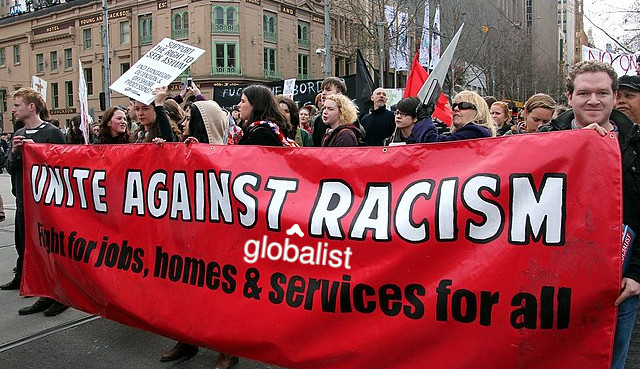Cultural sensitivity, traditionally seen as a vehicle for promoting understanding and harmony among diverse groups, has a dual face. While some governments may employ it to foster inclusivity, there’s a growing concern that many states, especially those that are pursuing a course of globalisation, are using it to deliberately amplify racial division and sow social discontent.
This short article delves into how cultural sensitivity can be manipulated as part of a broader global strategy to further certain agendas.
1. Amplifying Differences:
One method governments employ is emphasizing cultural and racial differences to create a sense of “otherness.” By highlighting certain cultural practices or beliefs as alien or incompatible with the mainstream, they can engender mistrust and fear. The continuous portrayal of these differences, whether in the media or public discourse, can create an atmosphere of suspicion, making integration and harmony more challenging.
2. Selective Recognition:
Another tactic is the selective recognition of certain cultural or racial groups over others. By giving undue attention and privileges to specific communities and neglecting others, governments can foster feelings of resentment and jealousy. This selective approach creates a hierarchy of cultures, leading to internal strife and competition for recognition.
3. Manipulation of History:
History can be a powerful tool for shaping perceptions. Some governments might revise historical narratives to portray certain racial or cultural groups in a negative light. By doing so, they perpetuate stereotypes and biases, laying the groundwork for division and mistrust among communities.
4. Policies of Exclusion:
While appearing to champion cultural sensitivity, some governments might enact policies that are exclusionary. These policies, whether in education, employment, or public representation, can be subtly designed to disadvantage certain racial or cultural groups, reinforcing their marginal status and exacerbating divisions.
5. International Alliances:
On the global stage, governments can use cultural sensitivity as a tool to forge alliances based on shared cultural or racial identities. These alliances, often formed under the guise of cultural solidarity, can be used to counter or challenge rival states, furthering geopolitical agendas.
6. Weaponizing Social Media:
In the digital age, social media is a potent tool for manipulating public opinion. Governments can employ bots, trolls, and fake accounts to amplify divisive narratives, playing on cultural sensitivities to create discord. By targeting specific communities with tailored content, they can exacerbate existing tensions and stir up animosity.
Middle Class White Males
In many European-based societies, there’s a historical and cultural backdrop that places middle-class white males as the traditional breadwinners and pillars of the community. In recent times, societal changes, economic shifts, and Globalist agendas have challenged this traditional role.
1. Amplifying Job Insecurity:
The narrative can be pushed that globalization and immigration are taking away jobs traditionally held by middle-class white males. By emphasizing stories of job losses in sectors predominantly occupied by this demographic and attributing these losses to foreign competition or immigrant workers, feelings of resentment and fear can be sowed.
2. Undermining Educational Achievements:
Cases where affirmative action towards marginalised groups or diversity quotas disadvantage white male students can foster feelings of being sidelined. This narrative can create a perception that their achievements are undervalued or that they face unfair competition.
3. Questioning Cultural Identity:
Promoting narratives that European traditions and values are under threat can tap into fears of cultural displacement. By emphasizing stories of cultural practices that seem alien or contrary to traditional European norms, a sense of cultural erosion can be created.
4. Emphasizing Social Isolation:
Highlighting stories of white males facing social isolation or being labelled as “privileged” without acknowledging individual struggles can lead to feelings of being misunderstood or maligned. This narrative can further feelings of detachment from wider societal issues.
5. Political Polarization:
Pushing polarized political narratives that appeal to perceived losses, whether cultural, economic, or social, can be a way to galvanize marginalised groups around more extremist views. By offering solutions that seem to restore lost status or privilege, extremist groups can gain traction.
Conclusion:
It’s crucial to recognize that such strategies of division and polarization harm societal cohesion and unity. Understanding these tactics, irrespective of the targeted demographic, is essential to counteract them and promote a more inclusive and harmonious society. It’s also worth noting that not all middle-class white males or any other demographic will respond to such tactics, as many are aware of the agendas of those in power.
The misuse of cultural sensitivity by governments to deliberately create racial division and social discontent is a grave concern. While cultural sensitivity remains a a useful tool for promoting global harmony and understanding, it’s crucial to be vigilant against its potential misuse. Recognizing and challenging divisive tactics is the first step in ensuring that cultural sensitivity remains a force for unity and not division.
